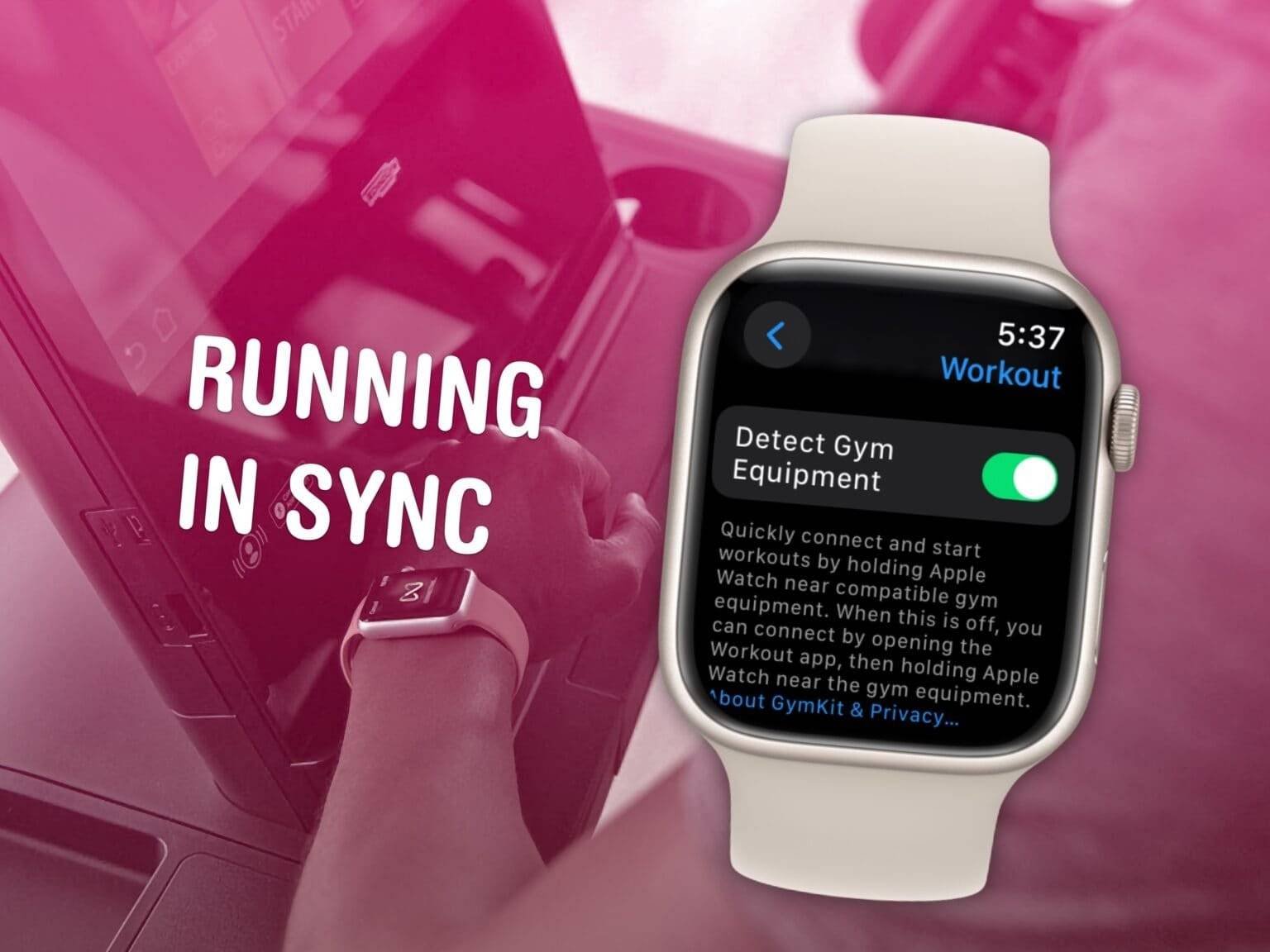Learn How to Depreciate Fitness Equipment and Save on Taxes. This Guide Explains the Best Methods and Tips for Gym Owners. Read Now!
Fitness equipment is costly. Additionally, it has a short life span and becomes outdated quickly. Therefore, it is necessary to understand how fitness equipment can be depreciated if you own a gym.
Depreciation is an accounting method that allows for the gradual reduction of value in assets over time until they reach zero. This means writing off some part of its original cost against taxable income as expense in each year. As a result, this reduces taxes paid while increasing cash flow.
However; How does one depreciate fitness equipment? What are certain methods or rules involved? How do we calculate the depreciation and report them on our taxes? Also why should we consider depreciating fitness equipment?
In this post we will answer these queries among others too. We will describe what depreciation means for owners of gyms like you and I. Besides showing different ways with examples on how to depreciate fitness equipment; Tips & tools provided will help make the process easy and efficient.
You’ll have everything by the end of reading this article needed for your complete guide about saving money through taxation by depreciating physical training facilities. So let’s begin!

How to Depreciate Gym Equipment
Being a gym owner, you are aware of the high cost of gym equipment and how quickly it loses value. Therefore, it is important to learn how to depreciate fitness equipment.
Depreciation is a method of allocating the cost of your gym equipment over its useful life. This helps in decreasing the taxable income and increasing cash flow. However, which method should one opt for when it comes to depreciating gym equipment?
There exist three major methods of depreciation; straight-line, declining balance and units of production. Each method has its own merits and demerits. What follows is an analysis of each with regard to fitness equipment.
- Straight-line depreciation is the easiest approach among all others since it only involves dividing cost by years that machine will last. For example if a bike costs $2,000 but can serve for 5 years then yearly deduction would be $400.This formula is quite simple and consistent as well however may not reflect wear and tear on machines accurately enough.
- Declining balance method refers to quicker ways than this one above mentioned before where rates decline exponentially over time periods rather than remaining fixed throughout the entire useful lifespan like straight line does (i.e., higher proportionate amount deducted earlier). Under declining balance system one multiplies initial expense by given percentage rate annually – so if treadmill value = $5000 with 20% depreciation rate; first year’s deduction equals $1000 second year’s =$800 et cetera .This technique seems realistic because more taxes are saved during initial years but also might leave large salvage value at end period usefulness.
- Units of production relates to usage based strategy which means multiplying total purchase price x ratio between actual output and divided potential output expected from the same device. For instance weight machines cost $3000 (all-inclusive) while usable hours =10 ,000 then per hour used tax write off becomes equal $0.30.This way seems most accurate plus adaptable too though measuring performance levels could prove difficult for certain equipment.
In a nutshell, each depreciation method has its own advantages and disadvantages thus you should take into account your business objectives, cash flow requirements as well as taxation position before choosing how best to depreciate fitness equipment in case you need to consult a tax expert or use an online calculator.
How Long to Depreciate Gym Equipment
When it comes to depreciating fitness equipment, one of the most important questions you must answer is how long to do so. This is also known as useful life. It is a time frame in which an equipment item should make money for your gym.
The useful life of your gym equipment affects the amount of annual depreciation expense that can be deducted. The longer the usefulness period, the lower the yearly depreciation charge. On the other hand, if it has a short useful life then you will incur higher depreciation costs annually.
So how do you determine what could be referred to as ‘useful’ in relation to this context? Well, there are some guidelines provided by the IRS about different categories of assets among them being exercise machines too. According to IRS rules most often seven years would classify any fitness machine as property having such an expectation but remember not everything has hard and fast rules; if need be one can select another period provided they have good grounds for doing so.
There are many factors which may influence the useful life of your gym equipment including usage, maintenance and obsolescence. For instance if you use it frequently or intensively then it might wear out faster than expected or even needed at times.
On top of that proper regular servicing could extend its lifespan far beyond what was initially thought possible while technological changes within an industry could render certain types useless earlier than anticipated due either customer preferences shifting away from them towards newer options available or just becoming outdated altogether hence losing value before time.
Therefore when depreciating fitness gear take these into account among others: estimate based on personal experience and judgment but ensure that explanation given holds water otherwise audits could follow soon after word gets out!
How to Calculate Depreciation of Fitness Equipment
If you’re running a gym, then you know how useful fitness equipment can be; and how costly. That’s why it is essential to calculate the depreciation of fitness equipment.
Depreciation is defined as measuring the loss in value of an item over time which in this case is your gym’s facilities. Thus, it will assist in decreasing the amount subject to tax while increasing cash flow. But how do we go about calculating depreciation for our fitness equipment?
The formula used for calculating depreciation is quite easy – all you need to know is three things: cost of equipment; salvage value (estimated worth at end); and rate %. The first part comprises purchase price plus additional charges incurred while getting it ready for use whereas second part refers to what remains after deducting accumulated costs from initial investment outlay over lifespan period or useful life years as specified by manufacturer’s warranty terms & conditions booklet etcetera… The last percentage point represents the annual write off allowed by the Internal Revenue Service (IRS) so as not only does this make sense economically but also legally too!
There exist various methods through which one can determine how much an asset has depreciated such as straight-line method, declining balance technique and units of production system.
Each model has its own strengths and weaknesses hence some may work better than others depending on circumstances at hand e.g., straight line pattern being simplest but fails to account for actual wear & tear.
Declining balance formula considering real life situation thus saving more taxes during initial periods though leaving behind large amounts towards end when nears total depletion or obsolescence besides being less accurate due to lack precision regarding output measurement within units produced concept utilized under UOP approach etcetera….

How to Work Out Depreciation on Equipment
When it comes to depreciating fitness equipment, you should have two values in mind: the book value and the market value. These figures are not the same thing and they affect your business differently.
The original cost of the equipment minus accumulated depreciation gives you the book value. This is what you show on your balance sheet and use for tax purposes. In other words, it tells you how much of the equipment’s cost has been recovered through depreciation.
On the other hand, The current price at which one can sell an asset is referred to as market value. You calculate this by considering all relevant factors such as demand for similar assets, condition etcetera. This amount represents what could be realized if sold today or any other point in time when necessary. Such information helps with valuation exercises among others since it shows worthiness within markets where such items are traded frequently more especially those involved in resale activities.
Normally, either of two these may be used to compute depreciation relating to machines: i.e., using market value or else utilizing book value . However, depending on method plus rate adopted results might vary in terms of amounts obtained over different periods during calculations carried out basing on them.
For instance; straight-line method implies that each year book decreases by a similar amount but this does not necessarily mean so for the market because there could exist some years having high demand while others face low supply thus leading fluctuations.
If declining balance were chosen then early days would see rapid decrease in BV while MV might fall slowly due inflation/ appreciation depreciation should be done cautiously bearing mind that it affects valuation as well as resale stages since both ways have their merits and demerits towards profits realization levels considering ROI too but always try finding a balance between benefit and disadvantage associated with them
Fitness Equipment Depreciation Rate
Fitness gear is really costly. It breaks and gets old. Hence, one has to comprehend the rate of loss in value.
The depreciation rate refers to a fraction of the initial price that you can deduct as an expense every year. The speed at which this asset loses worth through use and time or due to market forces is revealed by it. Thus, higher rates quicken recovery of costs on assets and reduce taxes payable.
IRS offers fitness equipment depreciation rates based on factors like type and usage among others. Modified Accelerated Cost Recovery System (MACRS) allows for 7 years’ write-off with decreasing balance percentages of 14.29% for the first & last years plus 24.49% within these middle periods as stipulated by this method if adopted into your tax plan but Section 179 can enable you deduct maximum $1,050,000 spent during purchase year provided total amount does not exceed $2,620,000..
However there are different ways through which useful life may be determined conventionally or even methodologically; all these should also be considered when determining how much should be charged according to Straight-line method which is just one way among many others used like declining balance where sum-of-years digits formula comes into play but not forgetting about mid-year conventionality rule that might affect rates applied too..
How to Calculate Depreciation on Gym Equipment
If you own a gym or fitness center, figuring out how to calculate depreciation on gym equipment is crucial. However, it’s important to know that gym equipment is not the same as fitness equipment.
In fact, there are many items included in gym equipment which are not directly used for exercise like mats, mirrors, lockers or furniture while all these things fall under the term “fitness equipment.” Fitness gear on the other hand refers only to those tools and machines specifically designed for such purposes as running tracks (treadmills), cycling machines (bicycles) and weights among others.
Different depreciation methods and rates apply according to whether an asset is classified as either a five year property or seven year property subject to Modified Accelerated Cost Recovery System (MACRS).
Generally this means that most types of gym equipment should be considered five-year properties since their useful life span rarely exceeds more than five years. According to the MACRS method one can deduct each year only 20% of cost basis until zero balance sheet value reached after the last 5th year when the remaining 80% was written off.
Still there are some specific rules and exceptions concerning depreciating gym equipment too. For instance section 179 allows you to claim up $1,050,000 as deduction in the year purchase provided total amount spent does not surpass $2,620,000 while bonus depreciation permits additional 100% write-off irrespective of any cost limit.
By learning how depreciation works with respect towards gymnasiums one may reduce income tax payments thereby freeing up funds for investment elsewhere within business operations; also keeps track of assets’ worth hence facilitating informed decision making regarding future capital outlay requirements – so get started today!
Fitness Equipment Depreciation
If you own a gym or fitness center, then you probably know how crucial fitness equipment can be – and how pricey. It’s necessary to grasp the idea of accumulated depreciation and its impact on depreciation because of this.
Accumulated Depreciation means the cumulative total amount of depreciation which has been charged against an asset from the date it was acquired. In other words, it represents that part of asset value destroyed by use over time. Thus, higher is the accumulated depreciation; lower is an asset’s value.
To calculate accumulated depreciation for fitness equipment, add up yearly depreciations throughout years of using them. The amount depends on the method used (straight-line / declining balance / units-of-production), rate adopted and useful life estimated.
The balance sheet and income statement are affected by accumulated depreciation in your health club business. Liabilities’ side shows book value reduction resulting from deducting Accumulated Depreciation from cost on Balance Sheet while net income decreases due to higher expenses recorded under Depreciation Account in Statement of Income.
Being well-versed with such knowledge concerning depreciating fitness equipment will enable one manage his/her financials better thus saving more taxes for their gyms as well as keeping track on what they own currently worth so that future investments can be planned accordingly too! Therefore don’t wait any longer but start depreciating your fitness equipment now!
How to Depreciate Equipment for Taxes
When you have a gym or fitness center, you understand the value of fitness equipment. And also, its purchase and maintenance costs. This is why it becomes important to know how to depreciate fitness equipment for taxes.
Depreciating fitness equipment for taxes can help save money and improve cash flow. Each year, deducting some cost of your equipment can reduce taxable income thus paying less taxes. Additionally, this method enables faster recovery of the machine’s price which can be reinvested back into the business.
But then, how do you depreciate fitness equipment for tax? IRS has got requirements as well as forms meant specifically for depreciation purposes regarding these machines. You must use the MACRS approach coupled with half-year convention while calculating your depreciation expense. Equally important is filling Form 4562 attaching it together with Schedule C so as to report on depreciation deduction.
There are some tips and best practices that can make the process of depreciating more efficient. Keep accurate records showing when each item was purchased, its cost and usage. Track your depreciation expenses, updating them regularly too. For further assistance consider seeking help from a tax professional or use an online guide.
Knowledge on how to depreciate fitness equipment for taxes helps in better financial management of gyms saving tax money at the same time. It also allows one to keep track of asset values hence planning for future investments accordingly. Therefore don’t procrastinate any further but rather start today!
Fitness Equipment Depreciation Life
As a gym owner, you should be well aware of the importance of fitness equipment. Not only is it costly to buy and maintain, but depreciation expense also has significant effects on this.
Depreciation expense is defined as the yearly amount of depreciation deducted from an income. It represents that portion which has been utilized over one year out of total value for equipment; therefore, higher figures signify lower taxes paid on income.
To compute useful life and depreciation methods for workout tools, you have to apply a depreciation system. An accounting technique used in spreading out costs associated with machines over their estimated economic lives is known as depreciation method.
The years during which such equipment are expected to give services can be termed as useful life. For example, the straight-line method allocates 1/7th cost each year if assumed seven years will be utilized.
On your gym’s financial statements, the income statement and cash flow statement are affected by depreciation expense most directly. In other words, they both take a hit because of it! Gross income as well as net income decrease due to this which eventually brings about lowering tax bill while at the same time raising profit margin.
On cash flow statements though, we add back any amounts depreciated from net incomes so calculated operating cash flows should increase significantly leading into more money availability thus improving liquidity position too.
By understanding fitness equipment’s depreciation approach; one can effectively manage their finances within the facility saving them some taxable dollars alongside being able to monitor asset values closely thus making it possible for future investments planning.
So why wait? Start depreciating now!
Conclusion:
Through this article, we have been taught how to reduce fitness equipment for gym owners. We have dealt with the following matters:
- Depreciation – What is it and why should you care as a gym owner?
- Choosing the right depreciation method and rate for your fitness equipment
- Calculating depreciation and reporting it on your taxes
- Tips and tools to simplify the process of depreciating assets
Following these steps will help save money on taxes, increase cash flow, and improve financial management at your gym. It also allows you to keep track of asset value as well as plan for future investments.
We hope that this post has been beneficial to you in some way or another . If there are any questions or comments about anything mentioned here, please leave them below; we love hearing from our readers!
If you found value in what was provided here today then make sure to share with friends or coworkers who may find benefit as well; don’t forget to subscribe so more posts like these can be sent directly into your inbox.
Thank-you once again for taking time out of your busy schedule – we really appreciate how much interest people show towards learning about depreciation methods related specifically towards fitness facilities! Have an amazing day!

Frequently Asked Questions Of How To Depreciate Fitness Equipment
Q1: What is the best method to depreciate fitness equipment?
Ans: There is no answer to this question, because each method has its good points and bad points. However, there are some things you could take into account such as the anticipated useful life, wear and tear on the equipment, and tax implications. For instance, if you would like to recover the cost of equipment more quickly and save taxes in early years then a declining balance method may be preferred. If you want depreciation expense to remain steady and simple throughout, a straight-line method might be best.
Q2: How can you deduct the full cost of fitness equipment in one year?
Ans: One way of writing off Fitness Equipment costs for an entire year is through using Section 179 deductions. This provision allows taxpayers to deduct up to one million fifty thousand dollars ($1,050,000) of the cost of qualifying property placed in service during the year provided total cost does not exceed two million six hundred twenty thousand dollars ($2,620,000). However this deduction is limited by taxable income from active conduct of any trade or business.
Q3: How does depreciation affect the resale value of fitness equipment?
Ans: Depreciation affects the resale value of fitness equipment by decreasing both book value and market value. Book value is original cost minus accumulated depreciation which represents all recorded amounts for loss due to wear tear obsolescence or changes in market conditions over time. Market value is what someone can buy the same thing somewhere else today at current price level even though only few people do so because they don’t need another one.
Q4: How do you report depreciation of fitness equipment on your taxes?
Ans: To claim depreciation on your taxes for fitness equipment you will need to use the MACRS method with a half-year convention in order to calculate your expense. Additionally, you must fill out Form 4562 attaching it Schedule C where this deduction should be reported. Form 4562 serves as a reconciliation between different types of property being depreciated or amortized while Schedule C reports income & expenses from sole proprietorship or single-member LLC.
Q5: How do you choose the useful life of fitness equipment?
Ans: The useful life of Fitness Equipment refers to how many years have been estimated that particular piece(s) will stay operational and bring revenues into gym Owner’s pockets; The Internal Revenue Service (IRS) provides some guidelines about useful life for various assets including those associated with Health Clubs. According to them most often such items should fall under the seven-year property category so that you can have straight-line depreciation over 7 years (22). However if based upon their experience or judgment they feel another number is more appropriate then it may be chosen instead.

















